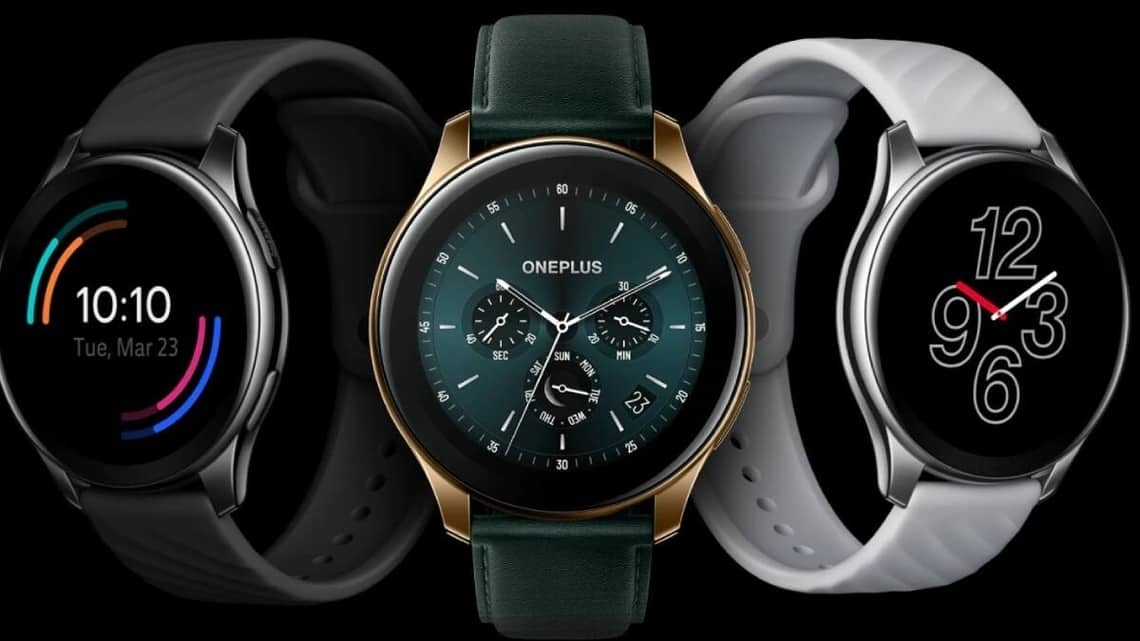
[ad_1]
At the Mobile World Congress in Barcelona, the technology goes far beyond mobile phones – be it smart wearables, hybrid laptops or augmented reality glasses
You may think that the ongoing Mobile World Congress (MWC) in Barcelona is all about smartphones, feature phones and anything and everything to do with mobile phones. But you’d be completely wrong.
At the MWC 2024 show floor in Barcelona, Spain, the technology goes far beyond mobile phones — from smart rings to artificial intelligence (AI) smart glasses and from electric cars to smartwatches.
Say hello to the SU7 electric car from Xiaomi: Xiaomi is having a very good MWC. They have new tablets, multiple smartphones, a smartwatch redemption arc, and even an electric car. Xiaomi unveiled the SU7 electric car in China in late December but there is no specific price yet. There’s also no release date except a rough timeline. Xiaomi plans to release the car, in China, sometime next year. Nonetheless, the company showcased the car at MWC and it definitely got the attention. The SU7 electric car looks sleek, is in blue, and runs Xiaomis’ HyperOS. Running HyperOS means it will easily integrate with the company’s smartphones, tablets smart products, and more. It’s got multiple cameras on the outside and can do zero-to-100km/h in just 2.78 seconds, the company claims.

Smart car model SU7 Max by Xiaomi is displayed at the Chinese company’s stand during the Mobile World Congress (MWC), in Barcelona on February 26, 2024.
(AFP)
Samsung Galaxy Ring: The Galaxy Ring made its first public appearance since being first announced at the Galaxy Unpacked event back in January (more about that here). The Galaxy Ring isn’t anything wildly different from comparable devices but it’s sleek and slim and fits comfortably on your finger. It is being offered in sizes from 5 to 13, which is more than usual. The Galaxy Ring comes in three colours – Platinum Silver, Ceramic Black and Gold – and has a concave shape. Samsung has big ambitions for the health space, and if it can nail the price (it hasn’t been announced yet), maybe it can take a big chunk of the market share.
One of Samsung’s rivals, Honor, has also announced that it is working on a smart ring.
Lenovo’s hybrid laptops: Lenovo has announced a plethora of business and hybrid laptops at the MWC conference in Barcelona. The models include the ThinkPad T14 Gen 5, ThinkPad T16 Gen 3, ThinkPad X12 Detachable Gen 2 and ThinkBook 14 2-in-1 Gen 4. They’re powered by the latest Intel Core Ultra processors and have all the AI features you could ask for. There’s also a dedicated Microsoft Copilot button, offering immediate access to the digital assistant.
The kicker here is that two of the models – the ThinkPad T14 Gen 5 and T16 Gen 3 – have been built with keeping reparability in mind. The iFixit team advised on the overall design, and hence it is very easy to swap out the SSD, WWAN card, battery and other components. These two laptops have a reparability score of 9.3/10 from the iFixit team, making it much better than most laptops out there. IFixit is an American e-commerce and how-to website that sells repair parts and publishes free wiki-like online repair guides.

Galaxy smart rings on display at the Samsung Electronics Co. booth on day two of the Mobile World Congress (MWC) at the Fira de Barcelona venue in Barcelona, Spain, on Tuesday, Feb. 27, 2024.
(Bloomberg)
Xiaomi Watch S3, Watch 2 and Smart Band 8 Pro: The Xiaomi Watch S3, based on HyperOS made its global debut at MWC. The Watch S3 features a 1.43-inch AMOLED screen (with a 466×466 pixel resolution), a 47mm case size and 5ATM water resistance. It can track heart rate, has a blood oxygen monitor, sleep tracker, 150 different sports modes and GPS. It’s compatible with both Android and iOS devices and supports Bluetooth calling. Powered by a 486mAh battery, Xiaomi says you can get around 15 days of battery life from a single charge.
The Watch S3 has one feature that differentiates it from the crowd. Swapping out watch straps is nothing new. You can now twist off the physical bezels and swap it for another one. An ingenious idea. It’s so simple and can be done one-handed as well. There are multiple options – Chrome Yellow, Rainbow, Dual-tone Ceramic, Ocean Blue colour schemes and more – for the bezel and even multiple straps including black and off-white.
The Xiaomi Watch 2, on the other hand, is powered by Snapdragon W5+ Gen 1 Wearable platform. This one is powered by Wear OS. It comes with high performance and low power consumption. There’s a 1.43-inch AMOLED display, an aluminium alloy frame and it weighs just 37g. There are over 160 sports modes on the Watch 2. With a 495mAh battery, the watch can last 65 hours under regular usage.
The Smart Band 8 Pro is a fitness tracker rather than a smartwatch. It features a 1.74-inch AMOLED screen (with a 60Hz refresh rate) and is protected by Corning Gorilla Glass Victus. It comes in at just 9.99mm thick and is supported by a metallic frame. One can easily change the band straps here as well. This one features over 150 sports modes and has a smart running function wherein the device can send pace reminders to help them stay on track. There’s also a brand-new 4-channel heart rate monitoring module. It has a 289mAh battery, which is good for 14 days of battery life. Lastly, it has a peak brightness of 600 nits.
Xiaomi Pad 6S Pro: Xiaomi is also releasing the Pad 6S Pro to global markets. Think of it as Xiaomi’s new iPad. It’s got a 12.4-inch, 12-bit, 144Hz, HDR-certified display. There’s a six-speaker audio setup. It is powered by Qualcomm’s Snapdragon 8 Gen 2 chipset and comes with 8GB/12GB RAM and 256GB/512GB storage. There’s a 10,000mAh battery along with 120W fast charging. As is the theme in 2024, the tablet has several AI features built into it.

A visitor looks at their phone during the Mobile World Congress (MWC), the telecom industry’s biggest annual gathering, in Barcelona on February 28, 2024.
(AFP)
OnePlus Watch 2: The OnePlus Watch 2 may be the biggest redemption arc in the world of smartwatches. Almost three years after the disastrous OnePlus Watch was released, the company is back with the OnePlus Watch 2. The second-gen smartwatch is very promising on paper. It runs on Google’s Wear OS 4, has a dual-engine architecture, allowing for up to 100 hours of battery life, and comes with Google Assistant built in.
The smartwatch’s biggest feature is that it has not one, but two chipsets inside of it. There’s the Qualcomm Snapdragon W5 and the BES 2700 MCU. The BES 2700 MCU is there for handling background activity and the lighter tasks. The Snapdragon W5, on the other hand, is for the more intensive tasks. The OnePlus Watch 2 also has a 500mAh battery.
As impressive as it may seem, there are a few downsides. The OnePlus Watch 2 misses out on fall detection, ECG monitoring and period tracking. Also, the company is only guaranteeing software support for two years — far less than what Apple, Samsung Google and others offer. The other big downside is that the watch only comes in one size – 47mm. That is way too big for a lot of users. The OnePlus Watch 2 is priced at ₹24,999 in India and comes in Black Steel and Radiant Steel colour options.
Oppo Air Glass 3: The Air Glass 3 from Oppo is a prototype set of augmented reality (AR) glasses. It comes with a voice assistant and was unveiled at MWC. It seamlessly connects to Oppo smartphones. It has side controls for playing music, displaying information and taking voice calls. These are similar to the Ray-Ban Meta Smart Glasses. The Air Glass 3 are powered by Oppo’s large language model (LLM), called AndesGPT.
Sahil Bhalla is a Delhi-based journalist. He posts at @IMSahilBhalla.
Also read: MWC Barcelona: What’s the latest from the world of smartphones?
[ad_2]
Source link








